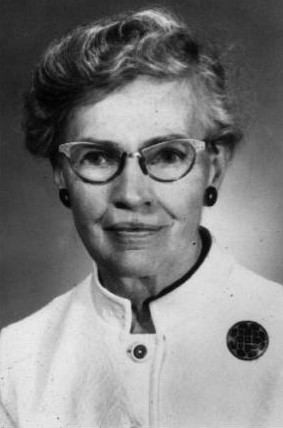Charlotte Moore Sitterly
 |
| American Astronomer Charlotte Moore Sitterly (1898 - 1990). Credit: National Institute of Standards and Technology |
Charlotte Moore Sitterly was born in 1898 in the country village of Ercildoun, Pennsylvania. Both of her parents were educators, and they took learning very seriously. Charlotte attended Swarthmore College in Pennsylvania, where her goal was to learn as much as she could in a variety of fields. She ended up majoring in mathematics and graduated in 1920. In order to pay for college, Charlotte did a lot of substitute teaching, instructing students in first grade up to senior high school.
After graduating college, Charlotte took a job with Henry Norris Russell at Princeton (for whom the Hertzsprung-Russell diagram is partly named, see this post). She didn't even apply for the job or meet Russell in person before taking the job; she was just that brilliant! At the time, Russell was devoting his work to spectroscopy (the study of an object's light which helps to determine what the object is made of), chemical abundances, and stellar evolution (how stars evolve over time). Charlotte's first job was to accurately determine the position of the Moon from photographic plates. Shortly after completing this arduous task, Charlotte moved on to double stars and spectroscopic research. She also attended some of Russell's evening graduate-level lectures and within five years, was the lead author on a Moore-Russell paper.
In 1925, Charlotte went to work at Mt. Wilson Observatory in California to help with the revision of the Rowland Astronomical Tables. She later earned her Ph.D. from the University of California at Berkeley in 1931 after two years of graduate study. Now that must've been awesome - to earn a doctorate degree in two years! She took classes at Berkeley during her first year and then spent her second year at Mt. Wilson Observatory, analyzing sunspot spectra. After graduating, Charlotte returned to Princeton, where Russell offered her a Research Assistantship. In 1936, Charlotte was promoted to Research Associate, and she continued gathering data for Russell. She was very accurate in her data collection and would never give him a list that she wouldn't back. Because of her detail-oriented mindset, Charlotte's monumental work A Multiplet Table of Astrophysical Interest has been incredibly useful and valuable to many scientists in their own research.
 |
| The title page of the 1959 revised edition of the Multiplet Table (Moore, 1959). Credit: Journal of Astronomical History and Heritage |
In 1945, Charlotte moved to the U.S. National Bureau of Standards where she worked in the Atomic Energy Levels Program. A year later, she also began work with the Naval Research Laboratory's XUV program. The Naval Research Laboratory had launched an XUV rocket and obtained its first successful ultraviolet spectrum of the Sun - no one knew what the ultraviolet solar spectrum looked like at the time, so this was quite a thrilling achievement.
Charlotte continued gathering data and organizing tables of atomic spectra well after retirement age, publishing her final collection just before her 87th birthday. The scientific community recognized the importance of her work, and she won numerous awards and prizes for her contributions.


Comments
Post a Comment